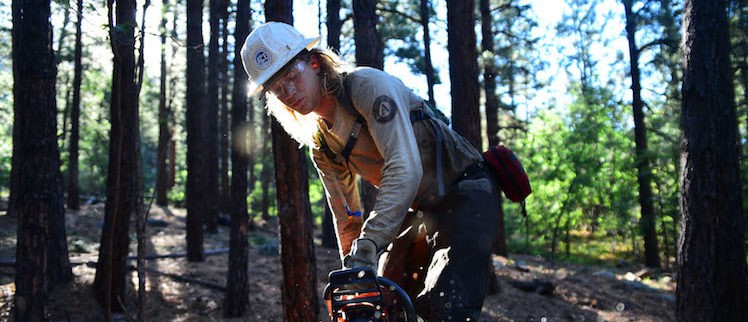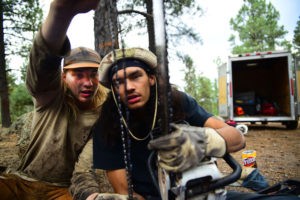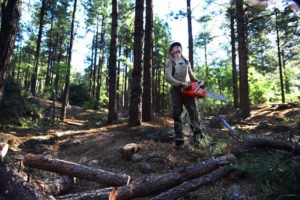ACE Arizona is continuing work on an 18-week forest-thinning project in the Dry Lake Hills region of Coconino National Forest, just outside of Flagstaff, Arizona. ACE is partnering with the City of Flagstaff Fire Department and the US Forest Service to complete this hand-thinning project.
Fire is a natural part of the ecosystem in this region. Historically, wildfires would burn across the forest floor, clearing out the dead and lower branches of trees, making way for a diverse understory of grasses, sedges, and forbs. After a century of fire suppression, logging and grazing, thick ground fuels and a ladder of dead branches have resulted in increased risks of crown fires. Numerous studies based on Forest Service data show that 90% of the trees on Southwestern forests are 12 inches in diameter and smaller. It is the high density of these small trees that represents the greatest fire risk.
In 2010, the Schultz fire burned 15,000 acres and caused between $133 and $147 million in economic damages to the Flagstaff community. The Flagstaff Watershed Protection Project (FWPP) conducted a study that concluded that post-fire flood impacts in the Dry Lake Hills region have the potential to result in significant damage to downstream watersheds. Catastrophic wildfires cause severe floods when they burn the vegetation that would normally absorb the rainfall, leaving the ground charred, barren, and unable to absorb water.
The Forest Service silviculturist has written prescriptions for five sections of the 100-acre area being thinned by the eight person ACE crew. The crew will be felling trees that are 9 inch diameter and smaller. After felling and bucking up the trees, the crew will be building piles for future prescribed fire operations. City of Flagstaff Fire Department Operations Specialist, Matt Millar, and ACE crew leader, Katherine Dickey, are overseeing this project. ACE is honored to participate in this effort to create a healthier ponderosa pine forest for the residents of Flagstaff.





